Aurora HDR 2018 a replacement for Luminar 2018
Here in the comments and some newsgroups the question come up to use Aurora HDR 2018 as a replacement for Luminar 2018. One reason is that the apps are very similar and on the hand having the HDR function as a useful add-on.
HDR function
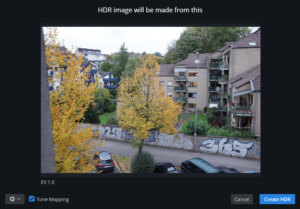 Capturing HDR usually is done by doing a exposure bracketing sequence with 3 or more image and merge those images to one HDR image. Mostly i used 3 exposures with a exposure distance of 2 EV between each capture. Sometime i shoot 5 or more exposures but use only 3 images for a first try in my favorite HDR tool. Meanwhile i use exposure blending more and more which gives you clear highlights and shadows with a lot of details but not the saturated colors like in a HDR image.
Capturing HDR usually is done by doing a exposure bracketing sequence with 3 or more image and merge those images to one HDR image. Mostly i used 3 exposures with a exposure distance of 2 EV between each capture. Sometime i shoot 5 or more exposures but use only 3 images for a first try in my favorite HDR tool. Meanwhile i use exposure blending more and more which gives you clear highlights and shadows with a lot of details but not the saturated colors like in a HDR image.
Because of the high dynamic range of modern cameras you couldone RAW file only to generate an HDR image, a function supported by Google’s HDR Efex and Aurora HDR 2018 of course.
Aurora HDR 2018
But with this app there is a big difference at the beginning. Opening a raw file in Luminar 2018 the file is loaded but opening the same raw file in Aurora HDR 2018 the app generates an HDR image first.
Take a look on this comaprism:
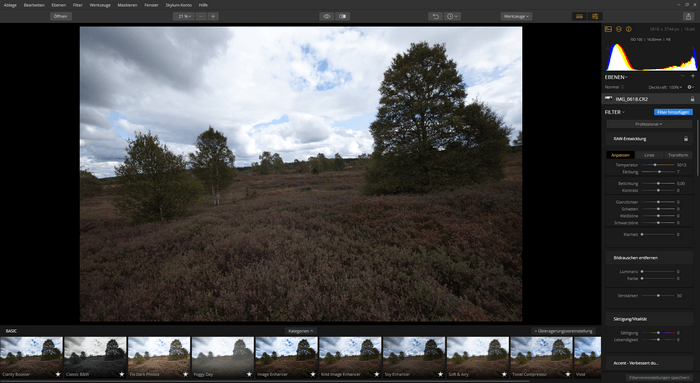
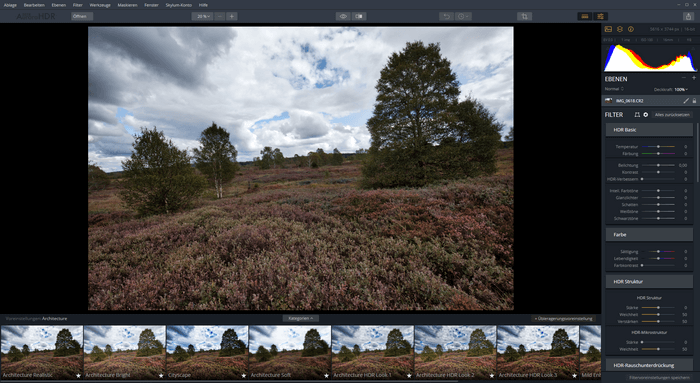
Maybe you’ll like the image made with Aurora HDR 2018 better, because there a lot of details in the sky areas and the dark foreground of the image is brighter. But would you like this on all your images? Besides opening and generating an HDR images takes a lot more time than just opening the raw file in Luminar 2018.
Both programs offer a lot of presets to adjust the image according to your taste with just one mouse-click.
Side bar
The differences in both side bar are very obvious comparing them side-by-side:
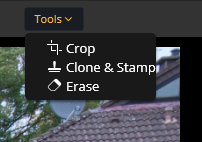 Here you might notice that all rulers in Aurora HDR 2018 are optimized for HDR processing, only the top part for exposure, contrast, highlights and shadows is the same.
Here you might notice that all rulers in Aurora HDR 2018 are optimized for HDR processing, only the top part for exposure, contrast, highlights and shadows is the same.
In the tools bar Aurora HDR only offers the cop tool, while Luminar 2018 offers in addition to the crop tool tools for cloning/stamping and a tool for ereasing. This tools are missing in Aurora HDR 2018.
Color neutrality
Just to compare Luminar and Aurora HDR 2018
It is eye-catching that both apps Luminar and Aurora HDR 2018 are almost the same in termns of color, even though both results are too warm-toned.
Now Lightroom isn’t an absolut measurement but here is the same comparism with an image from Lightroom and the image was lit by video lights set to daylight temperature:
Both images were done without any adjustments in the raw converter.
Conclusion
But to answer the original question we might state that in principle it works to replace Luminar 2018 by Aurora HDR 2018 if you don’t bother with a longer process and images slightly to bright.
ciao tuxoche
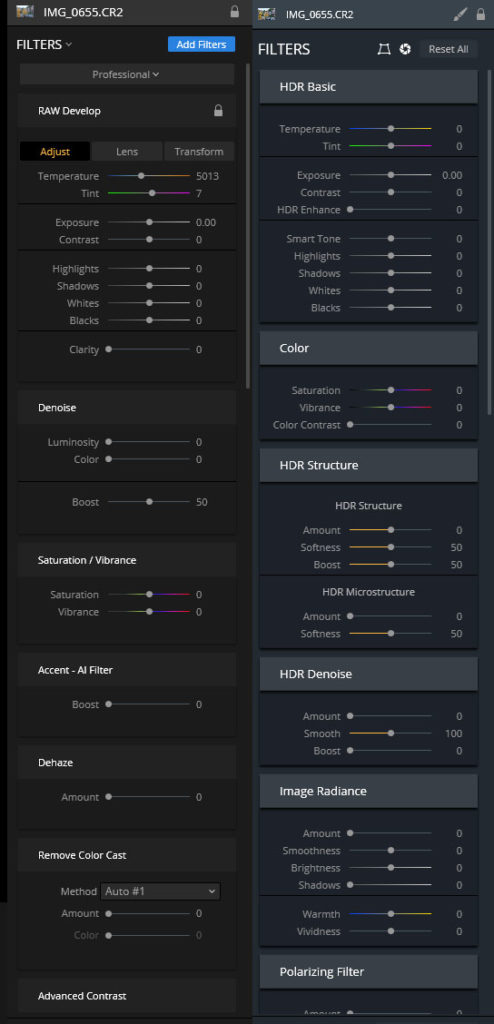
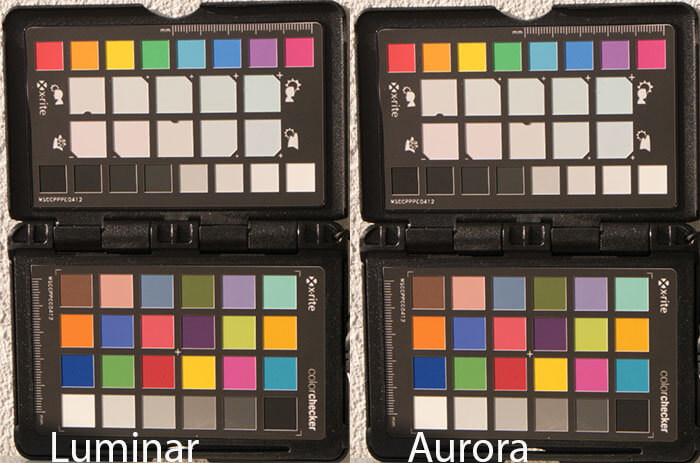
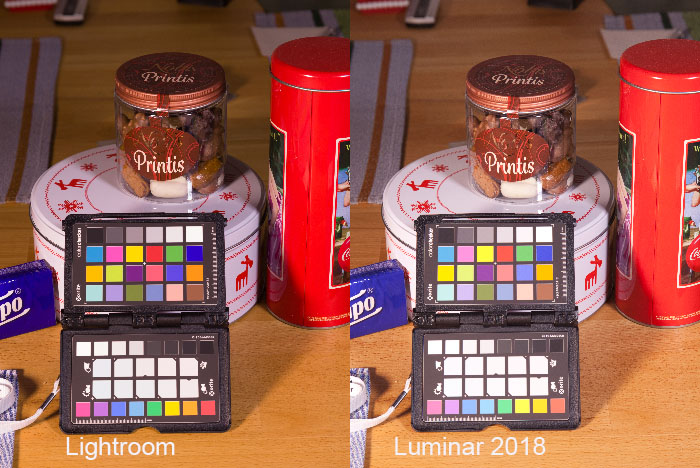




Perfect-Τέλειο (Greece)!!!